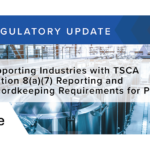
Phase 1 Environmental Site Assessments (ESAs) play a crucial role in assessing and mitigating potential environmental risks associated with a property. These assessments are typically conducted prior to property transactions or development projects to ensure compliance with environmental regulations and protect against liability. In Kyle, Texas, Kyle Phase 1 Environmental Site Assessments provide invaluable insights into the environmental conditions of a property and help stakeholders make informed decisions. This article will delve into the importance of Phase 1 ESAs, the process involved, interpreting the results, legal aspects, and the role of environmental professionals in conducting these assessments.
Understanding the Importance of Phase 1 Environmental Site Assessments
Phase 1 Environmental Site Assessments serve as a valuable tool in identifying potential environmental risks and liabilities associated with a property. These assessments help buyers, sellers, lenders, and developers gain a comprehensive understanding of the environmental history and conditions of a site. By uncovering any potential issues early on, Phase 1 ESAs enable stakeholders to make informed decisions, mitigate risks, and protect the environment.
The Role of Phase 1 Assessments in Environmental Protection
Environmental protection is paramount in any property transaction or development project. Phase 1 Environmental Site Assessments are designed to identify potential environmental hazards, such as soil contamination, groundwater contamination, or the presence of hazardous substances, which could pose risks to human health and the environment. By identifying these potential risks, Phase 1 ESAs contribute to the protection and preservation of natural resources and ecosystems, ensuring sustainable development.
Key Components of a Phase 1 Environmental Site Assessment
Phase 1 Environmental Site Assessments consist of several key components that collectively provide a comprehensive evaluation of a property’s environmental status:
- Site Inspection and Evaluation: Environmental professionals conduct a thorough on-site inspection to assess potential sources of contamination, including storage tanks, waste management areas, and nearby industrial facilities. This evaluation helps identify potential environmental risks associated with the site.
- Historical Review of the Site: A detailed examination of historical records, including aerial photographs, maps, and previous land uses, provides insights into past activities that may have impacted the site’s environmental condition. This assessment aids in identifying potential sources of contamination and allows for a comprehensive understanding of the property’s environmental history.
- Assessment of Potential Environmental Risks: Environmental professionals evaluate the potential risks associated with the site, including the presence of hazardous substances, proximity to sensitive receptors such as groundwater sources, and regulatory compliance. This assessment guides stakeholders in understanding the potential liabilities and implications involved.
The Process of Conducting a Kyle Phase 1 Environmental Site Assessment
Conducting a Kyle Phase 1 Environmental Site Assessment involves a systematic and rigorous approach to ensure accurate and comprehensive results. The process typically consists of the following steps:
Initial Site Inspection and Evaluation
The initial site inspection involves a thorough assessment of the physical conditions of the property. Environmental professionals visually inspect the site for signs of potential environmental contamination, including evidence of chemical spills, improper waste disposal, or other activities that may have contributed to soil or groundwater pollution. This evaluation forms the foundation for further investigation.
Historical Review of the Site
A detailed historical review is a crucial step in understanding the environmental history of the site. Environmental professionals conduct in-depth research on the property’s past uses, including previous industrial activities, storage of hazardous materials, or other land uses that may have led to environmental contamination. This historical review provides important insights into potential sources of environmental risks associated with the site.
Assessment of Potential Environmental Risks
Environmental professionals conduct a comprehensive assessment of potential environmental risks associated with the property. This assessment involves evaluating the presence of recognized environmental conditions (RECs) and the likelihood of contamination. It includes investigations into past and current uses of the property, compliance with environmental regulations, and the proximity of sensitive receptors such as wetlands or drinking water sources. Through this assessment, stakeholders can determine the potential environmental liabilities and the level of risk involved.
Interpreting the Results of a Kyle Phase 1 Environmental Site Assessment
Interpreting the results of a Kyle Phase 1 Environmental Site Assessment requires a careful analysis of the findings and their implications. This step involves:
Identifying Recognized Environmental Conditions (RECs)
Environmental professionals identify and document any recognized environmental conditions (RECs) associated with the property. RECs are known environmental issues or concerns that could pose potential risks or liabilities. These include factors such as soil or groundwater contamination, asbestos-containing materials, or regulatory violations. Identifying these RECs is crucial in understanding the extent of potential environmental risks.
Evaluating the Impact of RECs on Property Value
Once RECs are identified, it is essential to evaluate their potential impact on the property’s value and marketability. Environmental risks can significantly affect property values and may result in increased insurance costs or decreased resale potential. By accurately assessing the impact of RECs, stakeholders can make informed decisions regarding the property transaction or development plans.
Legal and Regulatory Aspects of Phase 1 Environmental Site Assessments
A Kyle Phase 1 Environmental Site Assessment must comply with relevant local and national environmental laws and regulations. Key legal and regulatory aspects include:
Compliance with Local and National Environmental Laws
The assessment process must adhere to applicable local, state, and federal environmental regulations. This includes compliance with laws related to hazardous waste management, air and water pollution control, and land use regulations. Adhering to legal requirements ensures the accuracy and reliability of the assessment findings.
Understanding the Liability Implications of Phase 1 Assessments
Phase 1 Environmental Site Assessments assist in identifying potential environmental liabilities associated with a property. Understanding the liability implications is crucial for buyers, sellers, and lenders. By conducting a thorough Phase 1 ESA, stakeholders can assess the extent of potential liabilities and take necessary steps to mitigate risks or negotiate terms that protect their interests.
The Role of Environmental Professionals in Phase 1 Assessments
Environmental professionals play a crucial role in the successful execution of Phase 1 Environmental Site Assessments. These professionals possess the necessary qualifications and expertise to conduct thorough evaluations and provide reliable recommendations. Their role involves:
Qualifications and Responsibilities of Environmental Professionals
Environmental professionals conducting Phase 1 ESAs hold appropriate certifications and qualifications in environmental sciences, geology, or related fields. They are responsible for conducting systematic evaluations, accurately documenting findings, and providing expert advice on potential risks and liabilities associated with the site. Their expertise ensures a thorough assessment and comprehensive understanding of the environmental conditions.
Selecting the Right Environmental Professional for Your Assessment
Choosing the right environmental professional is essential to ensure a successful Phase 1 Environmental Site Assessment. Stakeholders should consider factors such as the professional’s experience, qualifications, and expertise in the local regulatory context. Selecting a reputable and reliable environmental professional is crucial for obtaining accurate results and making informed decisions.
To wrap up, Kyle Phase 1 Environmental Site Assessments are invaluable in assessing potential environmental risks associated with properties. These assessments provide a comprehensive understanding of the environmental conditions, identify recognized environmental conditions (RECs), evaluate risks’ impact on property value, ensure compliance with legal and regulatory requirements, and require the expertise of environmental professionals. By investing in a Kyle Phase 1 ESA, stakeholders can make informed decisions, protect against potential liabilities, and contribute to the preservation of the environment.
Ready to ensure your property is environmentally sound and compliant with all regulations? ESE Partners is here to guide you through the complexities of environmental challenges. With our team of experienced environmental engineers and scientists, we offer tailored solutions for Phase 1 Environmental Site Assessments and more. Whether you’re in Kyle or any of our service areas across Texas, we’re committed to responsibly moving your business forward. Don’t leave your environmental due diligence to chance. Request A Proposal today and partner with ESE Partners for expert environmental problem-solving that benefits your business and the community.








